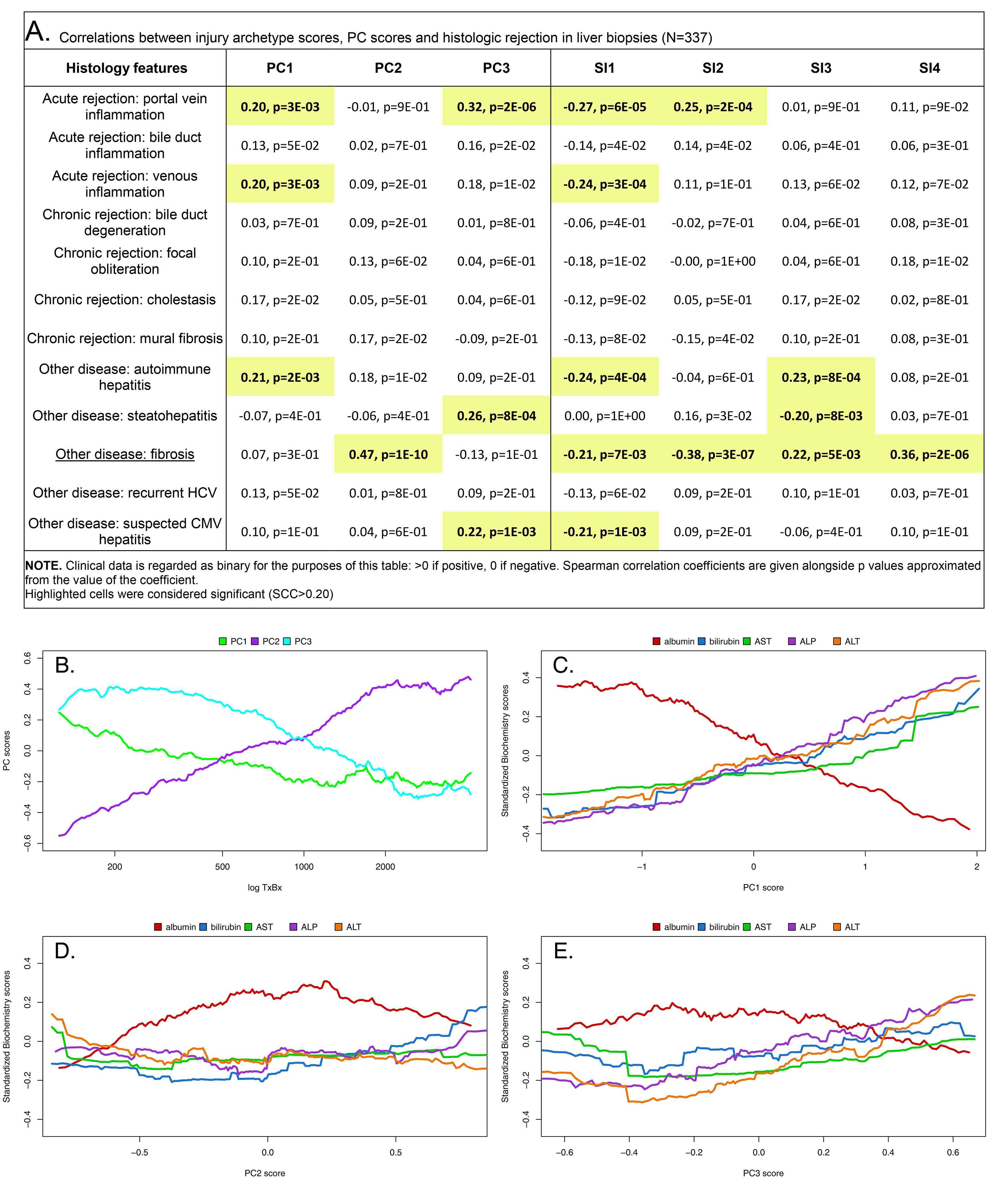Molecular Phenotypes of Liver Transplant Injury: The INTERLIVER Study
1Alberta Transplant Applied Genomics Centre, Edmonton, AB, Canada, 2., ., AB, Canada
Meeting: 2020 American Transplant Congress
Abstract number: 222
Keywords: Fibrosis, Gene expression, Liver, Liver transplantation
Session Information
Session Time: 9:59am-10:40am
 Presentation Time: 10:20am-10:27am
Presentation Time: 10:20am-10:27am
Location: Main Channel
*Purpose: Liver parenchymal injury phenotypes are difficult to evaluate by histology but could be amenable to molecular assessment. Having developed a Molecular Microscope® Diagnostic System (MMDx) for rejection, we further developed MMDx to characterize liver injury.
*Methods: We used gene expression microarrays to study 337 liver transplant biopsies from 13 international centers, compared to standard of care clinical and histologic data. Biopsies were characterized by their expression of injury-related gene sets: injury/repair (IRITs, IRRATs), macrophages (AMATs, QCMATs), acute stress (DAMPs), and immunoglobulins (IGTs). Unsupervised machine learning using principal component analysis (PCA) and archetypal analysis (AA) assigned a set of injury-related PCA and AA scores to each biopsy.
*Results: PC1 correlated with immune cell infiltration, tissue injury/repair, and histologic inflammation/autoimmune hepatitis. PC2 correlated with IGTs, time post-transplant, and histologic fibrosis but anticorrelated with DAMPs. PC3 distinguished inflamed biopsies lacking in macrophages, and significantly correlated with steatohepatitis (p=8×10-4) (Fig 1A and B).
A molecular classifier trained on steatohepatitis grades (Msgt0) and PC3 scores both predicted histologic steatohepatitis with AUCs=0.84 and 0.73, respectively. Biopsies called molecular steatohepatitis by Msgt0 agreed with histology in 16/33 cases, but with extensive disagreement.
Bilirubin, AST, ALT, and ALP increased with PC1, while albumin decreased (Fig 1C). Albumin was low and bilirubin, AST, ALP, and ALT were high in either very high or low PC2/PC3 scores (Fig 1D&E).
Biopsies were assigned to AA groups by highest AA score: I1normal N=149, I2early N=36, I3severe N=17, and I4late N=135. The I1normal score described relatively normal biopsies. I2early described early injury, while I3injury related to severe tissue repair/remodeling. I4late described late biopsies with IGTs and not DAMPs, a phenomenon also seen in late renal transplants with atrophy-fibrosis.
*Conclusions: MMDx-Liver reveals four distinct phenotypes characterized by relationships to time, biochemistry abnormalities, and effects of injury. PC1 separates injured biopsies from noninjured biopsies, PC2 separates early from acute injury, and PC3 correlated with histologic steatohepatitis. A molecular classifier provided an improved definition of steatohepatitis.
To cite this abstract in AMA style:
Madill-Thomsen KS, Halloran PF. Molecular Phenotypes of Liver Transplant Injury: The INTERLIVER Study [abstract]. Am J Transplant. 2020; 20 (suppl 3). https://atcmeetingabstracts.com/abstract/molecular-phenotypes-of-liver-transplant-injury-the-interliver-study/. Accessed December 25, 2025.« Back to 2020 American Transplant Congress

